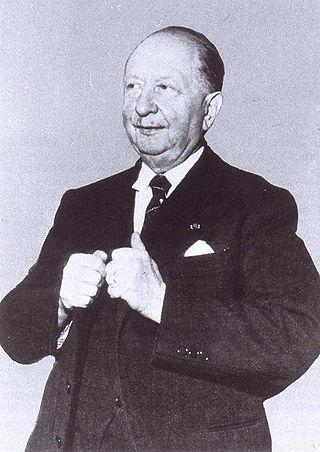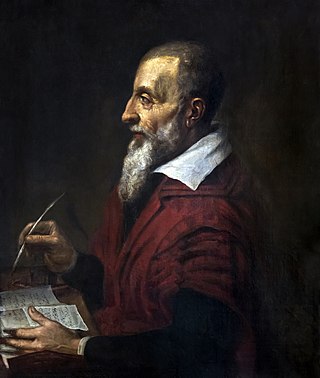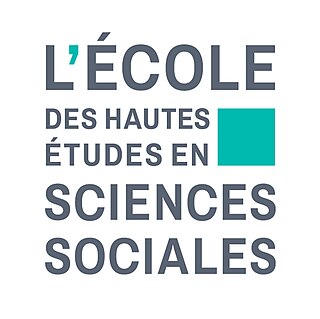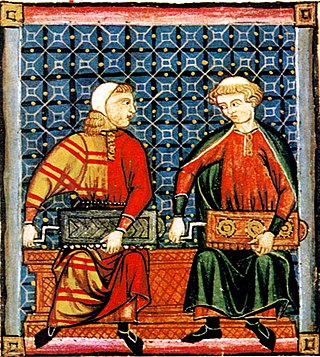
The Annales school is a group of historians associated with a style of historiography developed by French historians in the 20th century to stress long-term social history. It is named after its scholarly journal Annales. Histoire, Sciences Sociales, which remains the main source of scholarship, along with many books and monographs. The school has been influential in setting the agenda for historiography in France and numerous other countries, especially regarding the use of social scientific methods by historians, emphasizing social and economic rather than political or diplomatic themes.

The History of the Decline and Fall of the Roman Empire, sometimes shortened to Decline and Fall of the Roman Empire, is a six-volume work by the English historian Edward Gibbon. The six volumes cover, from 98 to 1590, the peak of the Roman Empire, the history of early Christianity, the emergence of the Roman State Church, the rise of Genghis Khan and Tamerlane, the decline of the Roman Empire and the fall of Byzantium, as well as discussions on the ruins of Ancient Rome.

Chronology is the science of arranging events in their order of occurrence in time. Consider, for example, the use of a timeline or sequence of events. It is also "the determination of the actual temporal sequence of past events".

An antiquarian or antiquary is an aficionado or student of antiquities or things of the past. More specifically, the term is used for those who study history with particular attention to ancient artifacts, archaeological and historic sites, or historic archives and manuscripts. The essence of antiquarianism is a focus on the empirical evidence of the past, and is perhaps best encapsulated in the motto adopted by the 18th-century antiquary Sir Richard Colt Hoare, "We speak from facts, not theory."
Timaeus of Tauromenium was an ancient Greek historian. He was widely regarded by ancient authors as the most influential historian between the time of Ephorus and Polybius. In the words of scholar Lionel I. C. Pearson, Timaeus "maintained his position as the standard authority on the history of the Greek West for nearly five centuries."

The Edict of Milan was the February 313 AD agreement to treat Christians benevolently within the Roman Empire. Western Roman Emperor Constantine I and Emperor Licinius, who controlled the Balkans, met in Mediolanum and, among other things, agreed to change policies towards Christians following the edict of toleration issued by Emperor Galerius two years earlier in Serdica. The Edict of Milan gave Christianity legal status and a reprieve from persecution but did not make it the state church of the Roman Empire, which occurred in AD 380 with the Edict of Thessalonica.

The Historia Augusta is a late Roman collection of biographies, written in Latin, of the Roman emperors, their junior colleagues, designated heirs and usurpers from 117 to 284. Supposedly modeled on the similar work of Suetonius, The Twelve Caesars, it presents itself as a compilation of works by six different authors, collectively known as the Scriptores Historiae Augustae, written during the reigns of Diocletian and Constantine I and addressed to those emperors or other important personages in Ancient Rome. The collection, as extant, comprises thirty biographies, most of which contain the life of a single emperor, but some include a group of two or more, grouped together merely because these emperors were either similar or contemporaneous.
Quintus Fabius Pictor was the earliest known Roman historian. His history, written in Greek and now mostly lost besides some surviving fragments, was highly influential on ancient writers and certainly participated in introducing Greek historiographical methods to the Roman world. However, the work was highly partisan towards Rome, blaming the Second Punic War on Carthage and idealizing the Roman Republic as a well-ordered state loyal to its allies. Fabius probably served as praetor, was a member of the Senate, and participated in a delegation sent to the oracle at Delphi in 216 BC. Some scholars consider him one of the earliest annalists, although this conclusion has been criticized.
Angolar Creole is a minority Portuguese-based creole language of São Tomé and Príncipe, spoken in the southernmost towns of São Tomé Island and sparsely along the coast, especially by Angolar people. It is also called n'golá by its native speakers. It is a creole language with a majority Portuguese lexicon and a heavy substrate of a dialect of Kimbundu, a Bantu language from inland Angola, where many had come from prior to being enslaved. It is rather different from Sãotomense, the other creole language spoken on the island.
Arnaldo Dante Momigliano, KBE, FBA was an Italian historian of classical antiquity, known for his work in historiography, and characterised by Donald Kagan as "the world's leading student of the writing of history in the ancient world".

The School for Advanced Studies in the Social Sciences is a graduate grande école and grand établissement in Paris focused on academic research in the social sciences. It is regarded as one of the most prestigious institutions of graduate education in France. The school awards Master and PhD degrees alone and conjointly with the grandes écoles École normale supérieure, École polytechnique, and École pratique des hautes études.
Eduard Schwartz was a German classical philologist.

In the Middle Ages, the Galician-Portuguese lyric, also known as trovadorismo in Portugal and trobadorismo in Galicia, was a lyric poetic school or movement. All told, there are around 1680 texts in the so-called secular lyric or lírica profana. At the time Galician-Portuguese was the language used in nearly all of Iberia for lyric poetry. From this language derives both modern Galician and Portuguese. The school, which was influenced to some extent by the Occitan troubadours, is first documented at the end of the twelfth century and lasted until the middle of the fourteenth, with its zenith coming in the middle of the thirteenth century, centered on the person of Alfonso X, The Wise King. It is the earliest known poetic movement in Galicia or Portugal and represents not only the beginnings of but one of the high points of poetic history in both countries and in Medieval Europe. Modern Galicia has seen a revival movement called neotrobadorismo.

The Church History of Eusebius, the bishop of Caesarea, was a 4th-century pioneer work giving a chronological account of the development of Early Christianity from the 1st century to the 4th century. It was written in Koine Greek, and survives also in Latin, Syriac and Armenian manuscripts.
Lionel Gossman was a Scottish-American scholar of French literature. He taught Romance Languages at Johns Hopkins University and Princeton University, and wrote extensively on the history, theory and practice of historiography, and on aspects of German cultural history.
Arnaldo is a given name. Notable people with the name include:
The Historiography of Albania or Albanian historiography refers to the studies, sources, critical methods and interpretations used by scholars to study the history of Albania and Albanians.
Historical anthropology is a historiographical movement which applies methodologies and objectives from social and cultural anthropology to the study of historical societies. Like most such movements, it is understood in different ways by different scholars, and to some may be synonymous with the history of mentalities, cultural history, ethnohistory, microhistory, history from below or Alltagsgeschichte. Anthropologists whose work has been particularly inspirational to historical anthropology include Emile Durkheim, Clifford Geertz, Arnold van Gennep, Jack Goody, Lucien Lévy-Bruhl, Marcel Mauss and Victor Turner.
Emilio Gabba was an Italian historian who specialised in Roman history.
The Dicionário de Tupi Antigo: a língua indígena clássica do Brasil was compiled by the Brazilian lexicographer and philologist Eduardo de Almeida Navarro and published in 2013. The work was conceived with the goal of spreading knowledge of the Tupi language to a broader public.












